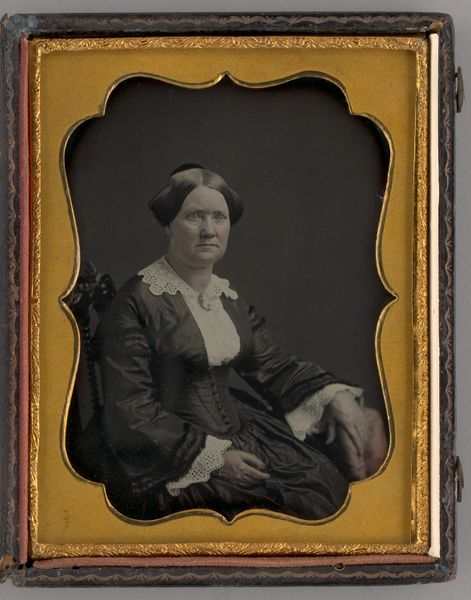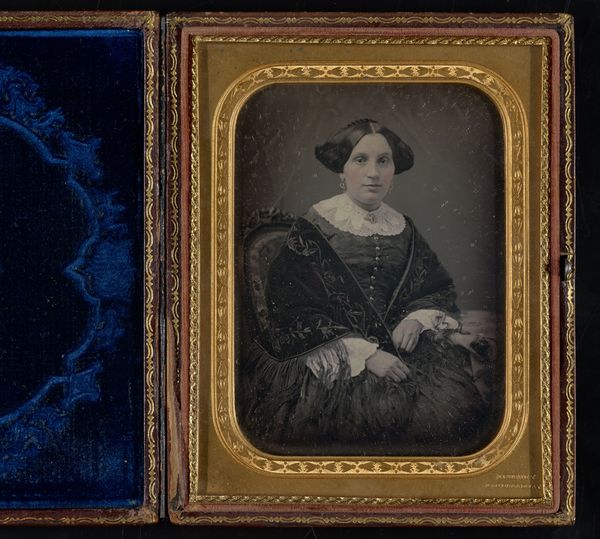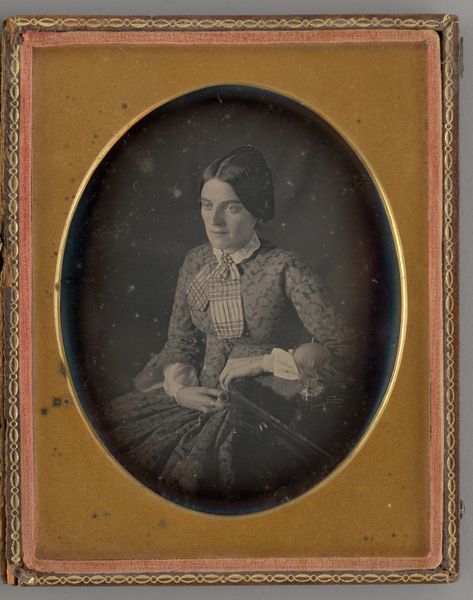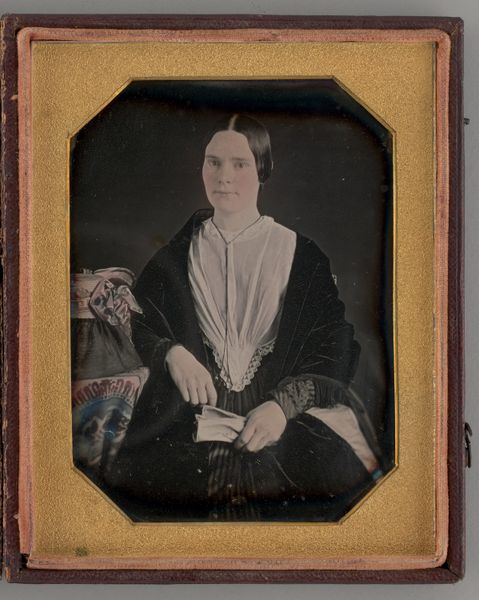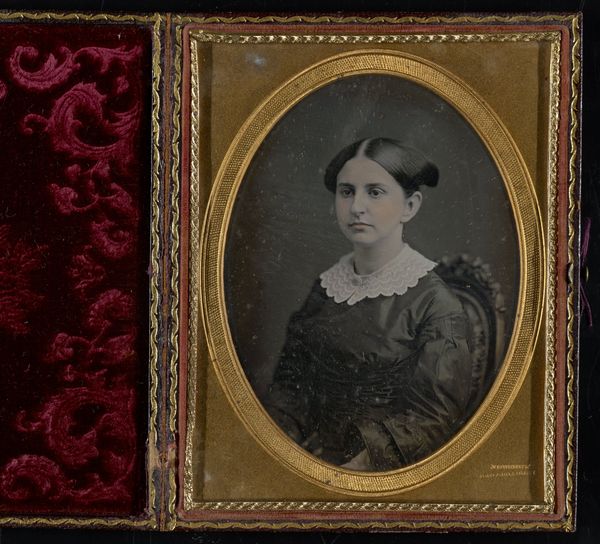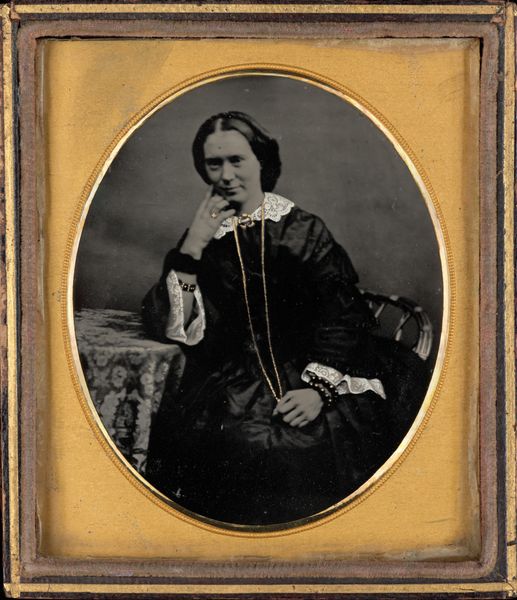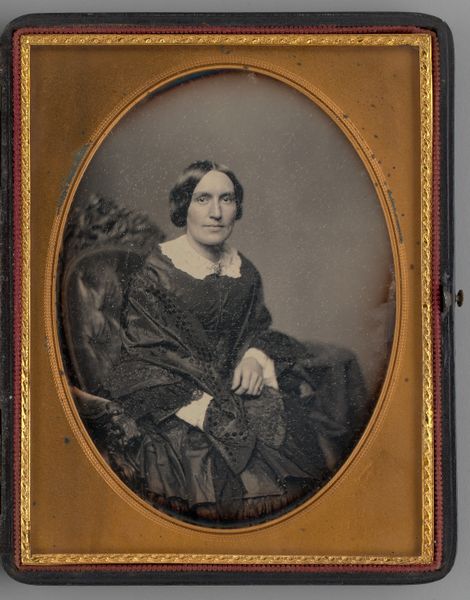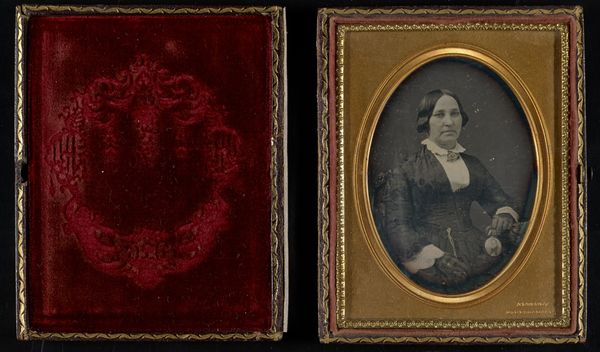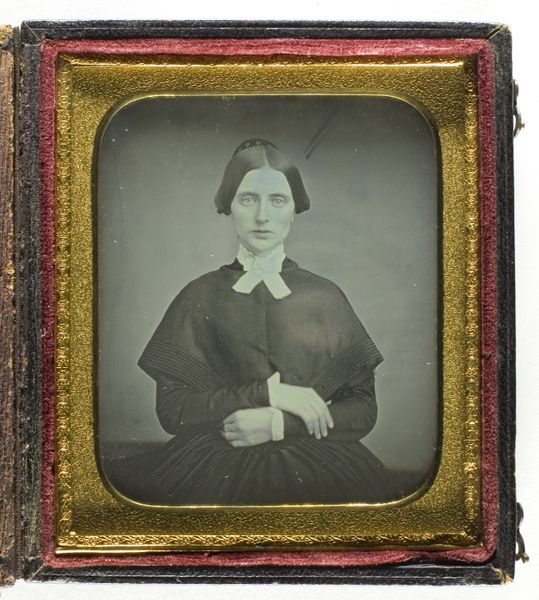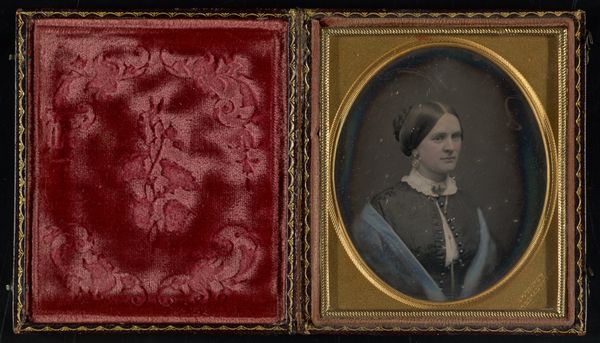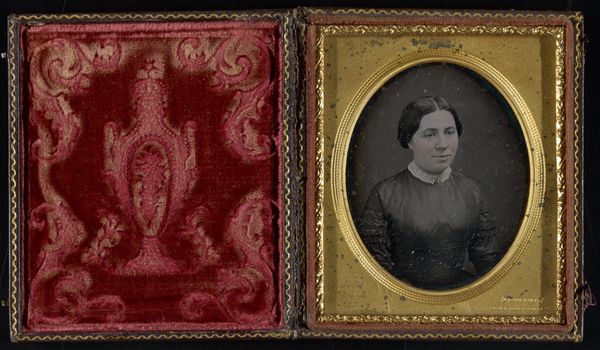
daguerreotype, photography, albumen-print
#
portrait
#
toned paper
#
16_19th-century
#
self-portrait
#
daguerreotype
#
photography
#
united-states
#
albumen-print
Dimensions: 5 1/2 x 4 1/4 in. (13.97 x 10.8 cm) (image)6 x 4 3/4 x 7/8 in. (15.24 x 12.07 x 2.22 cm) (mount)
Copyright: Public Domain
Curator: Looking at this portrait, I am immediately struck by the delicate luminosity, even within the rather constrained tonal range. Editor: Indeed. This daguerreotype, part of the collection at the Minneapolis Institute of Art, was created by Jeremiah Gurney between 1852 and 1858. It’s simply titled "Untitled." Curator: The tight composition focuses our attention on the sitter’s face, framed by that bonnet. There's a rather poignant stillness to it, don’t you think? A pre-Freudian depth… Editor: Absolutely. Consider the historical context. This was an era when photography was democratizing portraiture, offering accessibility to a wider populace. This woman, captured with such quiet dignity, likely would never have been immortalized in paint. Photography shifted the social landscape, altering how individuals perceived themselves and their place within society. Curator: Yes, but it's more than just accessibility. Look at the interplay of light and shadow—the careful modelling of form within the oval. Note how her expression has been fixed…almost sculpted. Gurney's masterful control of light is apparent. Editor: Certainly, but we shouldn’t disregard how early photographic processes imposed specific expectations. Posing for long periods to ensure clarity demanded stillness, contributing to that characteristic severity often observed in early photography. It wasn't simply the artist’s choice; it was a necessity driven by technology and the cultural aspirations surrounding portraiture itself. Curator: Granted, the technological limitations shaped the aesthetic. However, I still observe the composition through a formalistic lens; that soft gradient, the contrasting textures—the sheen of the dress against the matte finish of the headdress…it all speaks volumes. Editor: Agreed. What’s particularly captivating here is considering how this artifact, now within a museum, reflects a wider historical moment—a nexus where art, technology, and socio-political currents converged to shape perceptions of identity. Curator: It remains a rather potent confluence… Editor: One that reminds us how the image has always been far more than a mere depiction of reality, no?
Comments
No comments
Be the first to comment and join the conversation on the ultimate creative platform.
